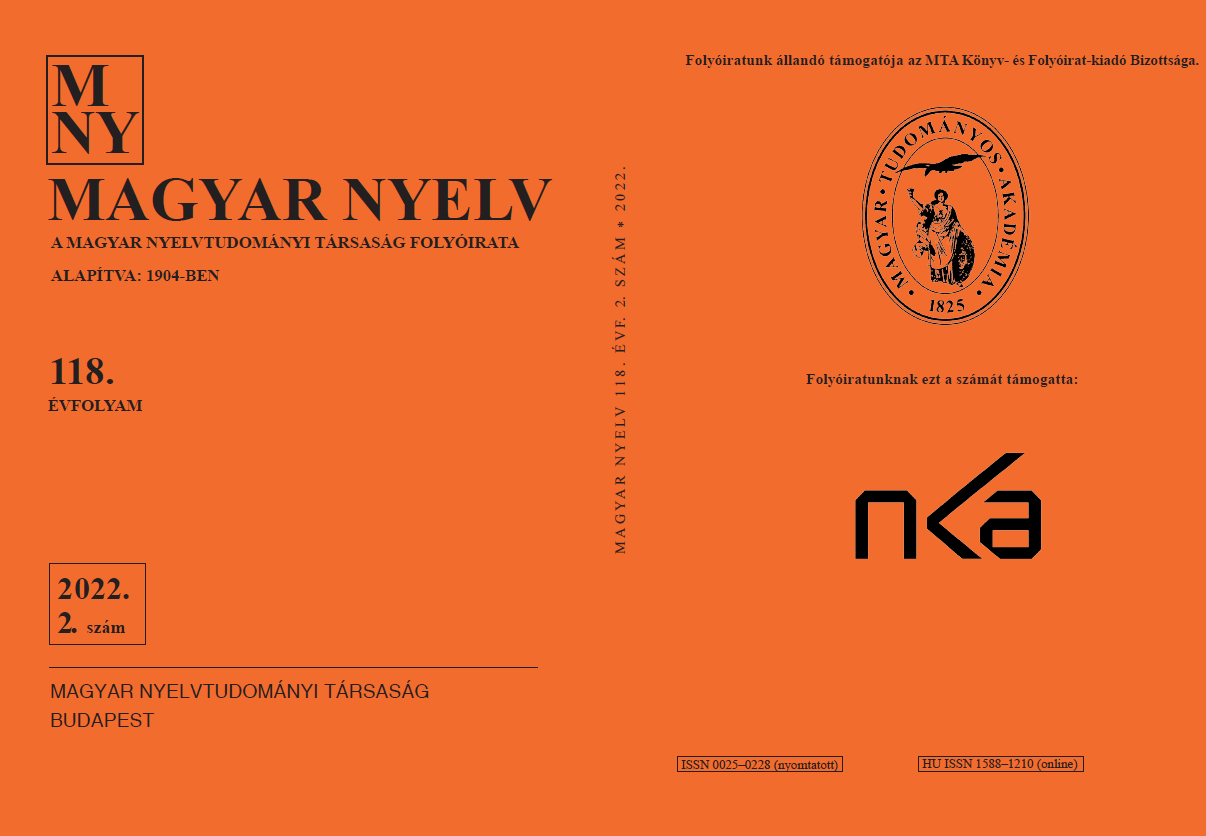The language of posters in the south of Slovakia warning about the pandemic
DOI:
https://doi.org/10.18349/MagyarNyelv.2022.2.175Keywords:
linguistic landscape, virolinguistic landscape, virolinguistics, monolingual warnings, bilingual warningsAbstract
One of the less researched areas of virolinguistics is the virolinguistic landscape, comprising the visual use of language and images in a given geographic area, particularly the collection of posters and visual aids offering safety instructions. The paper analyses the language of posters warning about the pandemic found in the bilingual south of Slovakia. The first half of the paper presents the results of an online survey conducted among Hungarians living in Slovakia regarding their attitude and demand in relation to public information about the pandemic (offered in Hungarian), while the second half investigates the virolinguistic landscape of Komárno, which is considered to be the cultural centre of Hungarians living in Slovakia. The results of the questionnaire show that Hungarians living in Slovakia consider it important that signs warning about the pandemic include a Hungarian translation in addition to the caption in the state language. However, based on the experience of respondents and the data collected during the fieldwork of the authors in Komárno, monolingual warnings in Slovak
are commonplace. The authors explain the lack of warnings in Hungarian with institutions’ and shops’ hasty reaction to the safety measures and the limited availability of bilingual posters on the internet.
Downloads
Published
Issue
Section
License

This work is licensed under a Creative Commons Attribution-NonCommercial-NoDerivatives 4.0 International License.
Magyar Nyelv is a Diamond Open Access periodical. Documents can be freely downloaded and duplicated in an electronic format, and can be used unchanged and with due reference to the original source. Such use must not serve commercial purposes. In the case of any form of dissemination and use, Hungarian Copyright Act LXXVI/1999 and related laws are to be observed. The electronic version of the journal is subject to the regulations of CC BY-NC-ND (Creative Commons – Attribution-NonCommercial-NoDerivatives).
The journal permits its authors, at no cost and without any temporal limitation, to make pre-print copies of their manuscripts publicly available via email or in their own homepage or that of their institution, or in either closed or free-for-all repositories of their institutions/universities, or other non-profit websites, in the form accepted by the journal editor for publication and even containing amendments on the basis of reviewers’ comments. When the authors publicize their papers in this manner, they have to warn their readers that the manuscript at hand is not the final published version of the work. Once the paper has been published in a printed or online form, the authors are allowed (and advised) to use that (post-print) version for the above purposes. In that case, they have to indicate the exact location and other data of the journal publication. The authors retain the copyright of their papers; however, in the case of an occasional secondary publication, the bibliographical data of the first publication have to be included.



